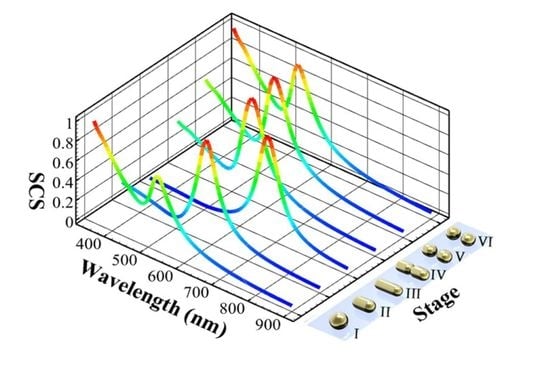Plasmon-Enhanced Photothermal and Optomechanical Deformations of a Gold Nanoparticle
Abstract
1. Introduction
2. Method
3. Numerical Results and Discussion
4. Conclusions
Author Contributions
Funding
Conflicts of Interest
References
- Wang, S.; Ding, T. Photothermal-assisted optical stretching of gold nanoparticles. ACS Nano 2019, 13, 32–37. [Google Scholar] [CrossRef] [PubMed]
- Ye, Z.; Wei, L.; Xiao, L.; Wang, J. Laser illumination-induced dramatic catalytic activity change on Au nanospheres. Chem. Sci. 2019, 10, 5793–5800. [Google Scholar] [CrossRef] [PubMed]
- Yu, S.-Y.; Gunawan, H.; Tsai, S.-W.; Chen, Y.-J.; Yen, T.-C.; Liaw, J.-W. Single-crystalline gold nanowires synthesized from light-driven oriented attachment and plasmon-mediated self-assembly of gold nanorods or nanoparticles. Sci. Rep. 2017, 7, 1–9. [Google Scholar] [CrossRef] [PubMed]
- Violi, I.L.; Gargiulo, J.; von Bilderling, C.; Corteés, E.; Stefani, F.D. Light-induced polarization-directed growth of optically printed gold nanoparticles. Nano Lett. 2016, 16, 6529–6533. [Google Scholar] [CrossRef]
- Toyouchi, S.; Wolf, M.; Nakao, Y.; Fujita, Y.; Inose, T.; Fortuni, B.; Hirai, K.; Hofkens, J.; de Feyter, S.; Hutchison, J.; et al. Controlled fabrication of optical signal input/output sites on plasmonic nanowires. Nano Lett. 2020, 20, 2460–2467. [Google Scholar] [CrossRef]
- Babynina, A.; Fedoruk, M.; Kuühler, P.; Meledin, A.; Doöblinger, M.; Lohmuüller, T. Bending gold nanorods with light. Nano Lett. 2016, 16, 6485–6490. [Google Scholar] [CrossRef]
- Liaw, J.-W.; Huang, C.-W.; Huang, M.-C.; Kuo, M.-K. Plasmon-enhanced optical bending and heating on V-shaped deformation of gold nanorod. Appl. Phys. A 2018, 124, 17. [Google Scholar] [CrossRef]
- Andreén, D.; Shao, L.; Laänk, N.O.; Acćimovicć, S.S.; Johansson, P.; Kaäll, M. Probing photothermal effects on optically trapped gold nanorods by simultaneous plasmon spectroscopy and Brownian dynamics analysis. ACS Nano 2017, 11, 10053–10061. [Google Scholar] [CrossRef]
- Chen, X.; Chen, Y.; Dai, J.; Yan, M.; Zhao, D.; Li, Q.; Qiu, M. Ordered Au nanocrystals on a substrate formed by light-induced rapid annealing. Nanoscale 2014, 6, 1756–1762. [Google Scholar] [CrossRef]
- Zhang, C.; Tumkur, T.; Yang, J.; Lou, M.; Dong, L.; Zhou, L.; Nordlander, P.; Halas, N.J. Optical force-dominated directional reshaping of Au nanodisks in Al-Au heterodimers. Nano Lett. 2018, 18, 6509–6514. [Google Scholar] [CrossRef]
- Taylor, A.B.; Siddiquee, A.M.; Chon, J.W.M. Below melting point photothermal reshaping of single gold nanorods driven by surface diffusion. ACS Nano 2014, 8, 12071–12079. [Google Scholar] [CrossRef] [PubMed]
- Opletal, G.; Grochola, G.; Chui, Y.H.; Snook, I.K.; Russo, S.P. Stability and transformations of heated gold nanorods. J. Phys. Chem. C 2011, 115, 4375–4380. [Google Scholar] [CrossRef]
- Makarov, S.V.; Zalogina, A.S.; Tajik, M.; Zuev, D.A.; Rybin, M.V.; Kuchmizhak, A.A.; Juodkazis, S.; Kivshar, Y. Light-induced tuning and reconfiguration of nanophotonic structures. Laser Photonics Rev. 2017, 11, 1700108. [Google Scholar] [CrossRef]
- Plech, A.; Ibrahimkutty, S.; Reich, S.; Newby, G. Thermal dynamics of pulsed-laser excited gold nanorods in suspension. Nanoscale 2017, 9, 17284–17292. [Google Scholar] [CrossRef] [PubMed]
- Kuhlicke, K.; Schietinger, S.; Matyssek, C.; Busch, K.; Benson, O. In situ observation of plasmon tuning in a single gold nanoparticle during controlled melting. Nano Lett. 2013, 13, 2041–2046. [Google Scholar] [CrossRef]
- Díaz-Nuúnũez, P.; Gonzaález-Rubio, G.; Prada, A.; Gonzaález Izquierdo, J.; Rivera, A.; Banñares, L.; Guerrero-Martínez, A.; Penña-Rodríguez, O. Using femtosecond laser irradiation to grow the belly of gold nanorods. J. Phys. Chem. C 2018, 122, 19816–19822. [Google Scholar] [CrossRef]
- Salmon, A.R.; Kleemann, M.-E.; Huang, J.; Deacon, W.M.; Carnegie, C.; Kamp, M.; Nijs, B.D.; Demetriadou, A.; Baumberg, J.J. Light-induced coalescence of plasmonic dimers and clusters. ACS Nano 2020, 14, 4982–4987. [Google Scholar] [CrossRef]
- Johns, P.; Suess, R.J.; Charipar, N.; Fontana, J. Ultrafast welding dynamics of plasmonic nanorod dimers. J. Phys. Chem. C 2019, 123, 15209–15216. [Google Scholar] [CrossRef]
- Herrmann, L.O.; Valev, V.K.; Tserkezis, C.; Barnard, J.S.; Kasera, S.; Scherman, O.A.; Aizpurua, J.; Baumberg, J.J. Threading plasmonic nanoparticle strings with light. Nat. Commun. 2014, 5, 4568. [Google Scholar] [CrossRef]
- Gonzalez-Rubio, G.; Gonzalez-Izquierdo, J.; Banares, L.; Tardajos, G.; Rivera, A.; Altantzis, T.; Bals, S.; Peñ-Rodríguez, O.; Guerrero-Martınez, A.; Liz-Marzán, L.M. Femtosecond laser-controlled tip-to-tip assembly and welding of gold nanorods. Nano Lett. 2015, 15, 8282–8288. [Google Scholar] [CrossRef]
- Nanda, K.K.; Maisels, A.; Kruis, F.E. Surface tension and sintering of free gold nanoparticles. J. Phys. Chem. C 2008, 112, 13488–13491. [Google Scholar] [CrossRef]
- Nanda, K.K.; Maiselsb, A.; Kruis, F.E. Evolution of crystallinity of free gold agglomerates and shape transformation. RSC Adv. 2011, 1, 568–572. [Google Scholar] [CrossRef]
- Toimil Molares, M.E.; Balogh, A.G.; Cornelius, T.W.; Neumann, R.; Trautmann, C. Fragmentation of nanowires driven by Rayleigh instability. Appl. Phys. Lett. 2004, 85, 5337–5339. [Google Scholar] [CrossRef]
- Chen, Y.; Milenkovic, S.; Hassel, A.W. Thermal stability of {1 1 0} facet terminated gold nanobelts. Appl. Surf. Sci. 2012, 258, 6224–6231. [Google Scholar] [CrossRef]
- Karim, S.; Toimil-Molares, M.E.; Balogh, A.G.; Ensinger, W.; Cornelius, T.W.; Khan, E.U.; Neumann, R. Morphological evolution of Au nanowires controlled by Rayleigh instability. Nanotechnology 2006, 17, 5954–5959. [Google Scholar] [CrossRef]
- Karim, S.; Toimil-Molares, M.E.; Ensinger, W.; Balogh, A.G.; Cornelius, T.W.; Khan, E.U.; Neumann, R. Influence of crystallinity on the Rayleigh instability of gold nanowires. J. Phys. D 2007, 40, 3767–3770. [Google Scholar] [CrossRef]
- Vigonski, S.; Jansson, V.; Vlassov, S.; Polyakov, B.; Baibuz, E.; Oras, S.; Aabloo, A.; Djurabekova, F.; Zadin, V. Au nanowire junction breakup through surface atom diffusion. Nanotechnology 2017, 29, 015704. [Google Scholar] [CrossRef]
- Collard, S.M.; McLellan, R.B. High-temperature elastic constants of gold single-crystals. Acta Metall. Mater. 1991, 39, 3143–3151. [Google Scholar] [CrossRef][Green Version]
- Setoura, K.; Okada, Y.; Werner, D.; Hashimoto, S. Observation of nanoscale cooling effects by substrates and the surrounding media for single gold nanoparticles under CW-laser illumination. ACS Nano 2013, 7, 7874–7885. [Google Scholar] [CrossRef]
- Liaw, J.-W.; Lo, W.-J.; Kuo, M.-K. Wavelength-dependent longitudinal polarizability of gold nanorod on optical torque. Opt. Express 2014, 22, 10858–10867. [Google Scholar] [CrossRef]
- Liaw, J.-W.; Lo, W.-J.; Lin, W.-C.; Kuo, M.-K. Theoretical study of optical torques for alignments of Ag nanorod and nanowire. J. Quant. Spectrosc. Radiat. Transfer 2015, 162, 133–142. [Google Scholar] [CrossRef]
- Liaw, J.-W.; Lin, W.-C.; Kuo, M.-K. Wavelength-dependent plasmon-mediated coalescence of two gold nanorods. Sci. Rep. 2017, 7, 46095. [Google Scholar] [CrossRef] [PubMed]
- Buttner, F.H.; Funk, E.R.; Udin, H. Viscous creep of gold wires near the melting point. JOM 1952, 4, 401–407. [Google Scholar] [CrossRef]
- Often, D. The viscosities of liquid uranium, gold and lead. J. Nucl. Mater. 1967, 22, 28–32. [Google Scholar] [CrossRef]
- Alarifi, H.A.; Atis, M.; Ozdogan, C.; Hu, A.; Yavuz, M.; Zhou, Y. Determination of complete melting and surface premelting points of silver nanoparticles by molecular dynamics simulation. J. Phys. Chem. C 2013, 117, 12289–12298. [Google Scholar] [CrossRef]
- Vollath, D.; Fischer, F.D.; Holec, D. Surface energy of nanoparticles–influence of particle size and structure. Beilstein J. Nanotechnol. 2018, 9, 2265–2276. [Google Scholar] [CrossRef] [PubMed]
- Johnson, P.B.; Christy, R.W. Optical constants of the noble metals. Phys. Rev. B 1972, 6, 4370–4379. [Google Scholar] [CrossRef]
- Wu, B.; Heidelberg, A.; Boland, J.J. Mechanical properties of ultrahigh-strength gold nanowires. Nat. Mater. 2005, 5, 525–529. [Google Scholar] [CrossRef]
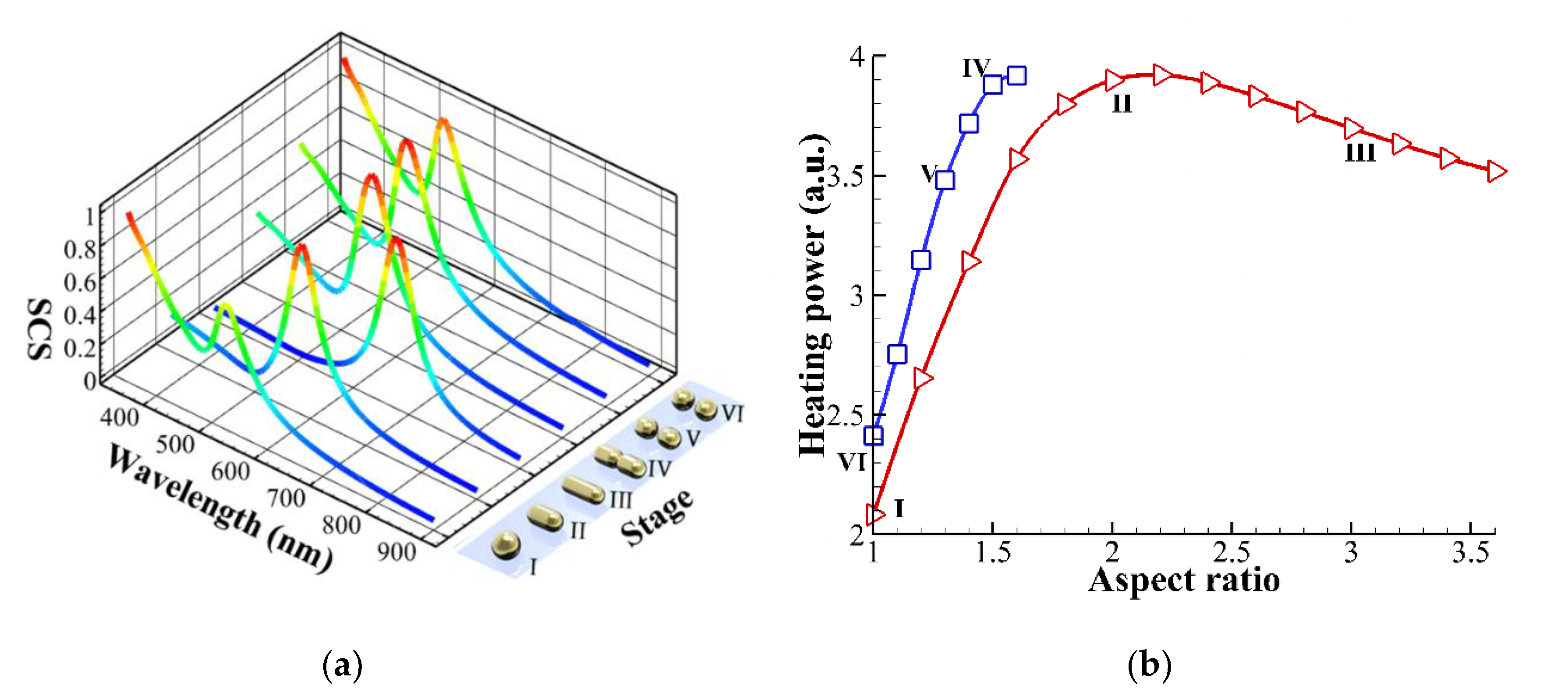
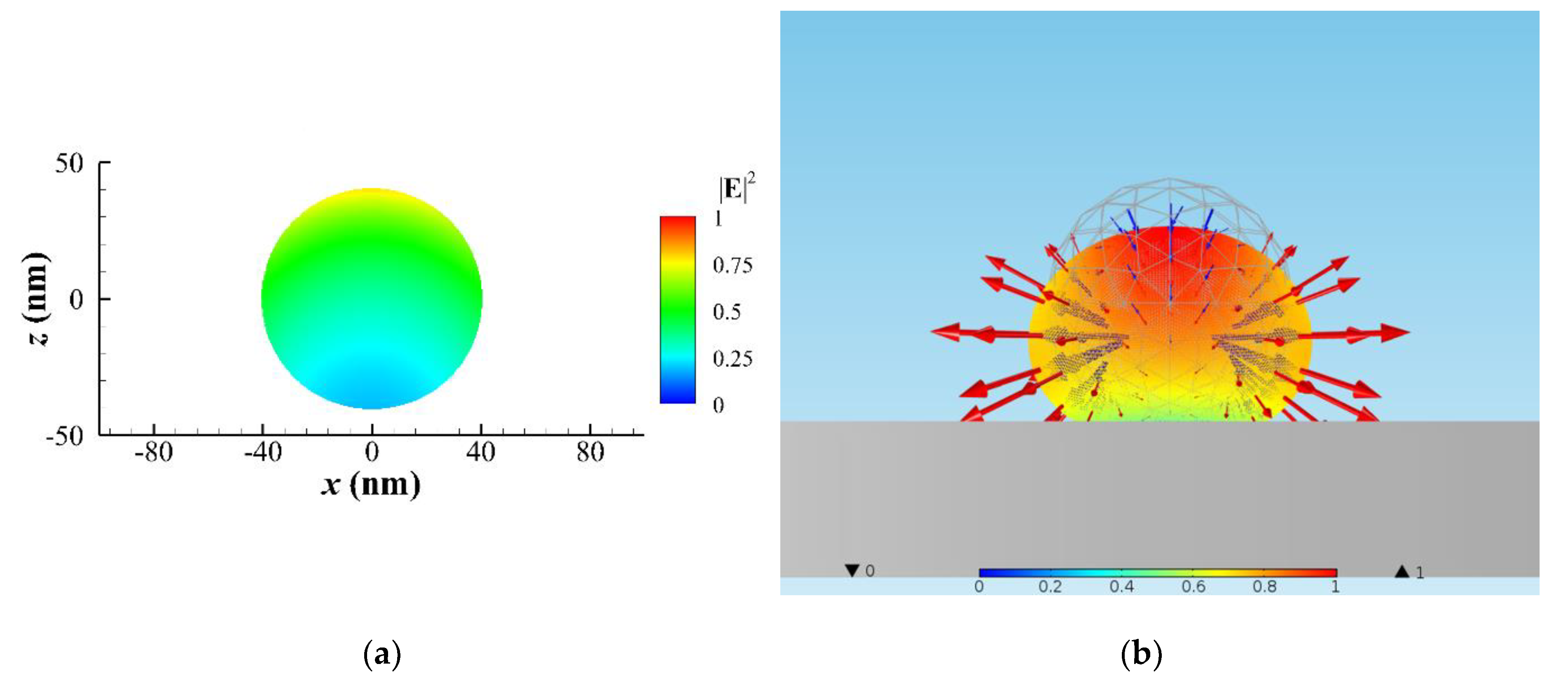
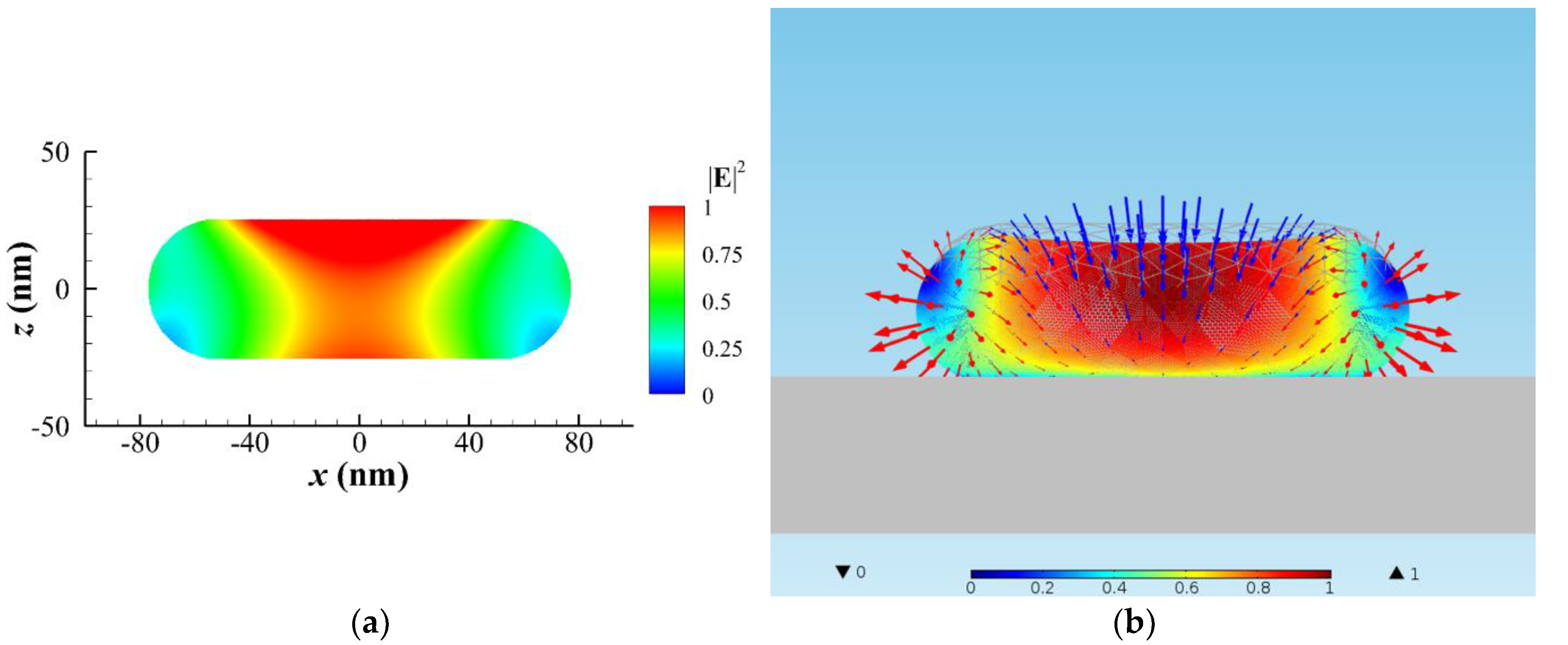
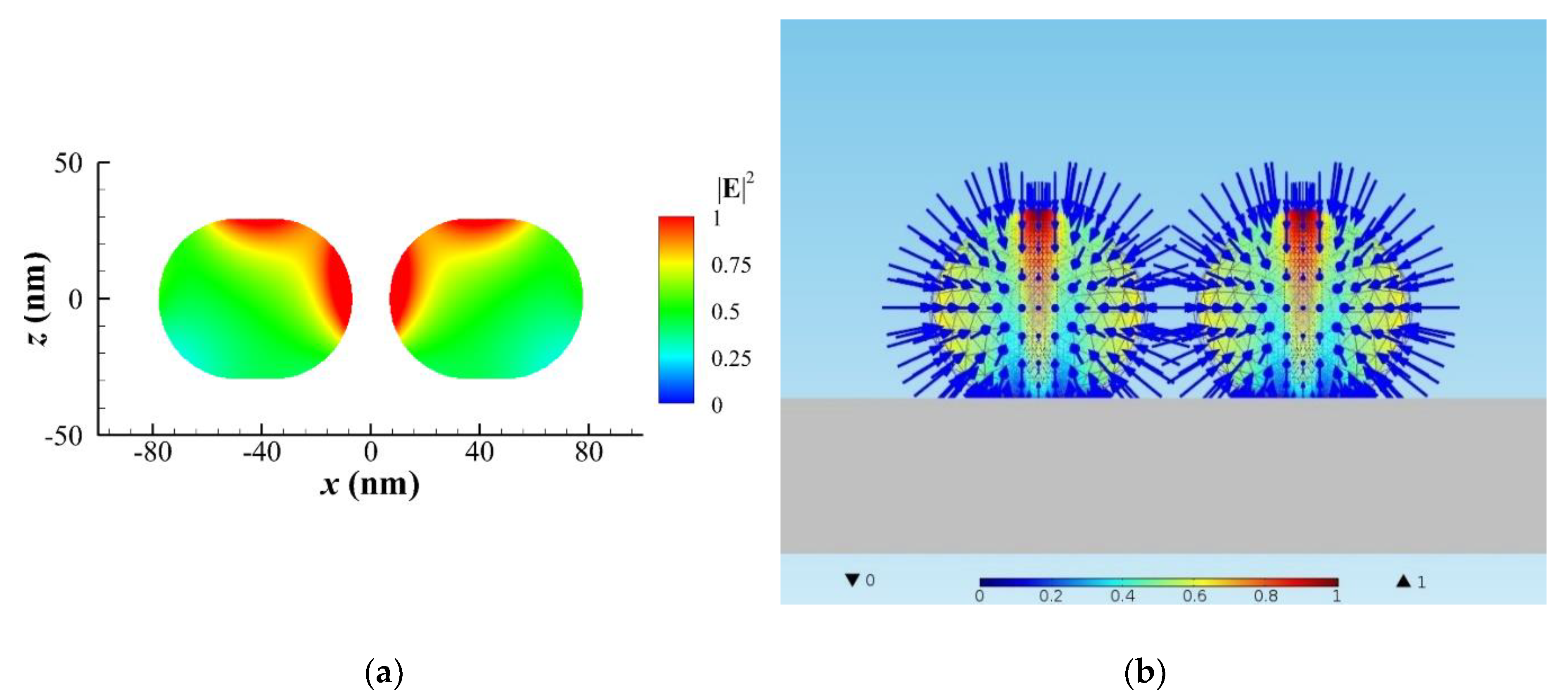
© 2020 by the authors. Licensee MDPI, Basel, Switzerland. This article is an open access article distributed under the terms and conditions of the Creative Commons Attribution (CC BY) license (http://creativecommons.org/licenses/by/4.0/).
Share and Cite
Liaw, J.-W.; Liu, G.; Ku, Y.-C.; Kuo, M.-K. Plasmon-Enhanced Photothermal and Optomechanical Deformations of a Gold Nanoparticle. Nanomaterials 2020, 10, 1881. https://doi.org/10.3390/nano10091881
Liaw J-W, Liu G, Ku Y-C, Kuo M-K. Plasmon-Enhanced Photothermal and Optomechanical Deformations of a Gold Nanoparticle. Nanomaterials. 2020; 10(9):1881. https://doi.org/10.3390/nano10091881
Chicago/Turabian StyleLiaw, Jiunn-Woei, Guanting Liu, Yun-Cheng Ku, and Mao-Kuen Kuo. 2020. "Plasmon-Enhanced Photothermal and Optomechanical Deformations of a Gold Nanoparticle" Nanomaterials 10, no. 9: 1881. https://doi.org/10.3390/nano10091881
APA StyleLiaw, J.-W., Liu, G., Ku, Y.-C., & Kuo, M.-K. (2020). Plasmon-Enhanced Photothermal and Optomechanical Deformations of a Gold Nanoparticle. Nanomaterials, 10(9), 1881. https://doi.org/10.3390/nano10091881



